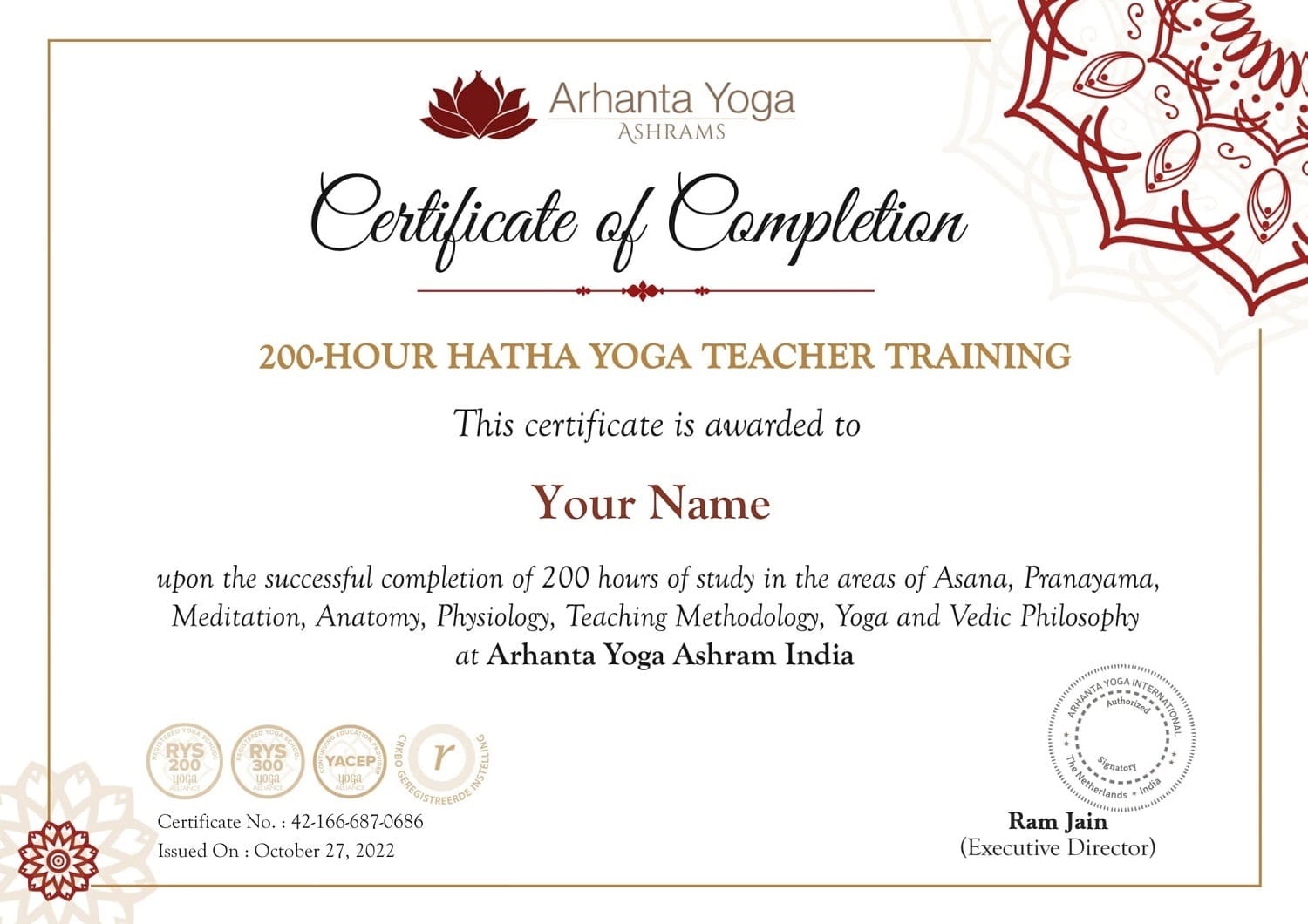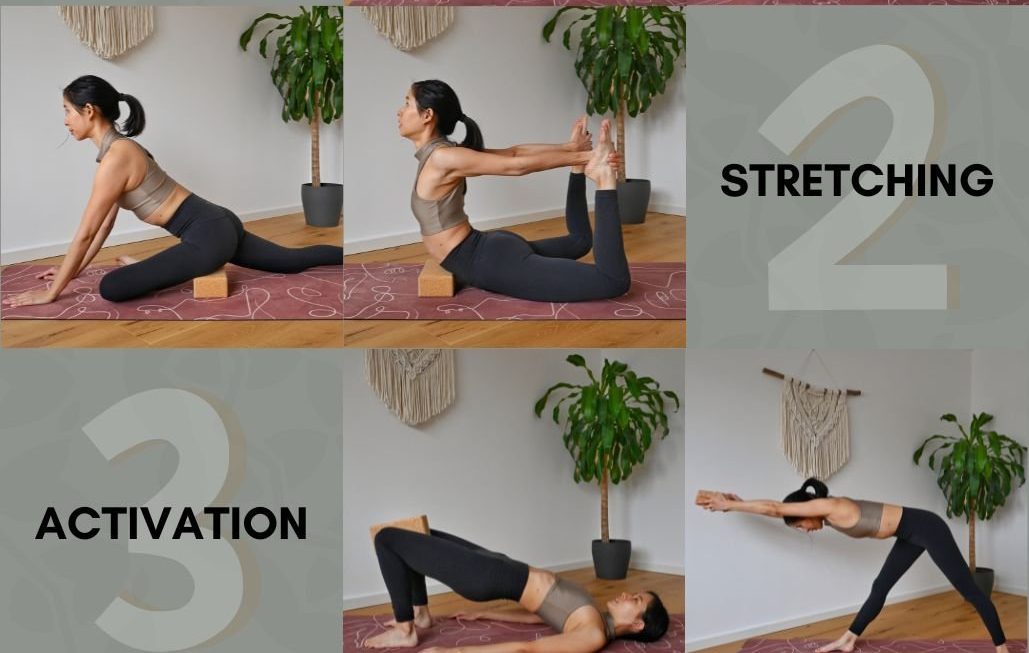Becoming a certified yoga instructor is a rewarding journey. It opens doors to share your passion for yoga with others.
If you love yoga and want to teach, getting certified is essential. Certification ensures you have the knowledge and skills to guide others safely and effectively. The process of becoming certified involves training, practice, and assessments. It may seem challenging, but with dedication, it is achievable.
In this blog, you will learn the steps needed to get certified as a yoga instructor. This guide will help you understand the requirements, find the right training program, and prepare for certification. Start your journey today and turn your passion for yoga into a fulfilling career.
Introduction To Yoga Certification

Thinking about becoming a certified yoga instructor? It’s a rewarding journey. Certification helps you teach yoga safely and effectively. It ensures you understand yoga principles and practices deeply. Let’s explore the importance of certification and the types available.
Importance Of Certification
Why is certification important? It builds trust and credibility. Students feel safe knowing you’re certified. Certification ensures you have the skills to teach yoga properly. It also opens doors to teaching opportunities worldwide. Certified instructors are often preferred by studios and gyms.
Another key point is self-growth. Through certification, you deepen your own practice. You learn advanced techniques and philosophies. This knowledge enriches your teaching and personal yoga journey.
Types Of Yoga Certifications
There are various types of yoga certifications. Each caters to different styles and levels.
| Certification Type | Description |
|---|---|
| 200-Hour Certification | Basic certification for beginner instructors. Covers fundamental yoga poses, anatomy, and teaching methods. |
| 300-Hour Certification | Advanced certification for deeper knowledge. It builds on the 200-hour course with advanced techniques and philosophy. |
| 500-Hour Certification | Combination of 200-hour and 300-hour courses. Comprehensive training for experienced instructors. |
| Specialized Certifications | Covers specific styles like Ashtanga, Vinyasa, or Hatha yoga. Also includes certifications for prenatal or therapeutic yoga. |
Choosing the right certification depends on your goals. A 200-hour certification is a great start. For deeper knowledge, consider advanced or specialized certifications.
Choosing The Right Yoga School
Choosing the right yoga school is crucial for your certification journey. The school you select will shape your learning experience and future teaching career. It is essential to consider several factors before making a decision. Here are some key aspects to look into:
Accredited Programs
Ensure the school offers accredited programs. Accreditation ensures the curriculum meets industry standards. Look for schools recognized by reputable organizations like Yoga Alliance. An accredited program provides a structured and comprehensive learning path. This helps in gaining a thorough understanding of yoga principles and practices.
Specializations Offered
Consider the specializations offered by the school. Different schools focus on various yoga styles and techniques. Some may offer specialized courses in Ashtanga, Vinyasa, or Hatha Yoga. Others might provide training in yoga therapy or prenatal yoga. Choose a school that aligns with your interests and career goals.
- Ashtanga Yoga
- Vinyasa Yoga
- Hatha Yoga
- Yoga Therapy
- Prenatal Yoga
Researching these factors will help you make an informed decision. Your choice will impact your growth as a yoga instructor. Take the time to explore your options and find the best fit for you.
Prerequisites For Certification
Becoming a certified yoga instructor requires meeting specific prerequisites. These ensure you have the knowledge and experience needed. Understanding these prerequisites helps you prepare better. Below, we explore the basic requirements and prior yoga experience needed for certification.
Basic Requirements
Most yoga certification programs have basic requirements. You usually need to be at least 18 years old. A high school diploma or equivalent is often necessary. Some programs may ask for a medical certificate. This ensures you are physically fit to teach yoga. Good communication skills are also important. They help you guide your future students effectively.
Prior Yoga Experience
Having prior yoga experience is crucial. Most programs expect you to have practiced yoga for at least one year. This experience helps you understand basic yoga poses. It also helps you grasp the philosophy behind yoga. Some programs may even require you to submit a recommendation letter. This letter usually comes from a certified yoga instructor. It validates your commitment to yoga practice.

Credit: www.arhantayoga.org
Understanding Yoga Alliance
Understanding Yoga Alliance is crucial for aspiring yoga instructors. Yoga Alliance is a well-known organization in the yoga community. It sets the standards for yoga teacher training programs. Let’s delve into the role of Yoga Alliance and its certification standards.
Role Of Yoga Alliance
Yoga Alliance is a nonprofit organization. It supports the yoga community and maintains high standards. It registers yoga schools and teachers who meet their requirements. This helps ensure quality and consistency in yoga education. Yoga Alliance also provides resources for ongoing professional development.
Certification Standards
Yoga Alliance has clear certification standards. These standards cover various aspects of yoga training. They include teaching methodology, anatomy, and philosophy. Schools must offer a minimum number of training hours. These hours ensure comprehensive coverage of essential topics.
Meeting these standards is vital for recognition. Yoga instructors with Yoga Alliance certification are more respected. This certification can open doors to better opportunities. It is a mark of credibility and commitment to quality.
Training Programs And Courses
Becoming a certified yoga instructor involves attending specialized training programs. These courses vary in length and depth. They provide the knowledge and skills needed to teach yoga. Here, we break down the main types of training programs.
200-hour Program
The 200-hour program is the foundation for all yoga instructors. It covers the basics of yoga postures, breathing techniques, and meditation. This program usually lasts around four to six weeks. It is perfect for beginners wanting to teach yoga.
The curriculum includes:
- Yoga postures (asanas)
- Breathing exercises (pranayama)
- Meditation techniques
- Anatomy and physiology
- Yoga philosophy
- Teaching methodology
Completing this program makes you eligible to register with the Yoga Alliance as a Registered Yoga Teacher (RYT-200).
Advanced 300-hour Program
The 300-hour program is for those who have completed the 200-hour training. It dives deeper into advanced techniques and teaching skills. This program usually lasts around eight to twelve weeks. It provides more in-depth knowledge and practical experience.
The advanced curriculum includes:
- Advanced yoga postures
- Complex breathing exercises
- In-depth yoga philosophy
- Advanced anatomy and physiology
- Hands-on adjustments
- Specialized teaching techniques
Graduating from this program allows you to register as a Registered Yoga Teacher (RYT-500) with the Yoga Alliance.
Both programs require dedication and practice. They are essential steps in becoming a skilled and certified yoga instructor.
Cost And Time Commitment
Becoming a certified yoga instructor involves both financial investment and a significant time commitment. Understanding the costs and time frame can help you plan your journey better. Here, we break down these key aspects.
Financial Investment
The cost of getting certified as a yoga instructor can vary widely. It depends on the program and location. Below is an overview of typical expenses:
- Tuition Fees: $1,000 to $3,000
- Books and Materials: $50 to $200
- Registration Fees: $50 to $100
- Workshops: $200 to $500
Some programs offer payment plans. Scholarships or early-bird discounts may also be available. It is wise to check for all options.
Time Frame For Completion
The time required to become a certified yoga instructor can range from a few weeks to several months. Here is a general timeline:
| Program Type | Duration |
|---|---|
| Intensive Programs | 2 to 4 weeks |
| Part-time Programs | 3 to 6 months |
| Weekend Programs | 6 to 12 months |
Remember, consistency is key. Practice regularly and attend all classes. This helps you absorb the material better.
Choose a program that fits your schedule and lifestyle. This ensures you can commit fully to your training.
Online Vs. In-person Training
Choosing between online and in-person training for yoga instructor certification is a big decision. Both options offer unique advantages. Your choice depends on your learning style, schedule, and budget.
Advantages Of Online Training
Online training has become very popular. It offers flexibility and convenience. You can learn at your own pace and from the comfort of your home.
- Flexible Schedule: Study anytime, anywhere.
- Cost-Effective: Often less expensive than in-person training.
- Access to Various Teachers: Learn from instructors worldwide.
- Recorded Sessions: Rewatch classes to understand better.
Online training is great for those with busy schedules or limited access to local programs.
Benefits Of In-person Training
In-person training offers a more immersive experience. You get to practice yoga with others and receive immediate feedback from your instructor.
- Hands-On Guidance: Direct feedback improves your skills.
- Community Feeling: Connect with other yoga enthusiasts.
- Enhanced Learning: Learn through physical adjustments.
- Structured Environment: More discipline and focus.
In-person training is ideal for those who prefer a structured learning environment and value face-to-face interaction.
| Factor | Online Training | In-Person Training |
|---|---|---|
| Flexibility | High | Moderate |
| Cost | Lower | Higher |
| Instructor Access | Global | Local |
| Community | Limited | Strong |
Both online and in-person training have their own strengths. Consider your needs and preferences to make the best choice for your yoga instructor journey.
Post-certification Steps
Congratulations on becoming a certified yoga instructor! The journey does not end here. Post-certification steps are essential for starting your teaching career. This section will guide you through important steps to establish yourself as a yoga instructor.
Registering With Yoga Alliance
First, register with Yoga Alliance. This organization sets standards for yoga teachers. Being a member adds credibility to your teaching. Visit the Yoga Alliance website. Create an account and submit your certification details. Pay the registration fee to complete the process.
Finding Teaching Opportunities
Next, start looking for teaching opportunities. Begin with local yoga studios. Many studios welcome new instructors. Offer to teach a few classes for free. This helps you gain experience and build connections. Also, consider community centers and gyms. They often seek yoga instructors.
Leverage social media platforms. Share your yoga journey and teaching schedule. Join online yoga communities. Engage with potential students and fellow instructors. Create a professional website. List your services, schedule, and contact details. This makes it easy for students to find you.
Network with other yoga instructors. Attend yoga workshops and events. These events are great for meeting studio owners. Building a strong network opens more teaching opportunities.
Continuing Education
Continuing education is crucial for yoga instructors. It ensures you stay updated with the latest practices and techniques. As a yoga instructor, commitment to learning never ends. There are always new skills to acquire and knowledge to deepen.
Importance Of Ongoing Learning
Ongoing learning helps you improve your teaching methods. It keeps your classes fresh and engaging. Students appreciate instructors who bring new insights and energy. Continuous education also helps prevent burnout. It keeps your passion for yoga alive. It also enhances your credibility as a professional.
Available Advanced Courses
Many institutions offer advanced yoga courses. These courses cover various styles and specializations. You can learn about prenatal yoga, yoga therapy, or advanced anatomy. Some courses focus on specific populations, like seniors or athletes. Others delve into the philosophical aspects of yoga.
Online platforms provide flexible learning options. You can study at your own pace and convenience. In-person workshops offer hands-on experience and networking opportunities. Both options are valuable for deepening your practice and teaching skills.
Frequently Asked Questions
What Are The Steps To Become A Certified Yoga Instructor?
To become a certified yoga instructor, complete a teacher training program, register with a yoga alliance, and gain practical teaching experience.
How Long Does Yoga Certification Take?
Yoga certification typically takes between 200 to 500 hours of training, which can be completed in a few months to a year.
What Is The Cost Of Yoga Teacher Training?
The cost of yoga teacher training varies, ranging from $1,000 to $3,000 depending on the program and location.
Can I Teach Yoga Without Certification?
While it’s possible to teach yoga without certification, obtaining a certification ensures credibility, enhances skills, and improves job opportunities.
Conclusion
Becoming a certified yoga instructor is rewarding. Follow the steps carefully. Choose an accredited program. Complete your training hours. Pass the certification exam. Gain practical experience through teaching. Maintain your certification with continuing education. Stay committed and passionate about yoga.
Your journey will inspire others. Start today and enjoy the benefits of teaching yoga.


